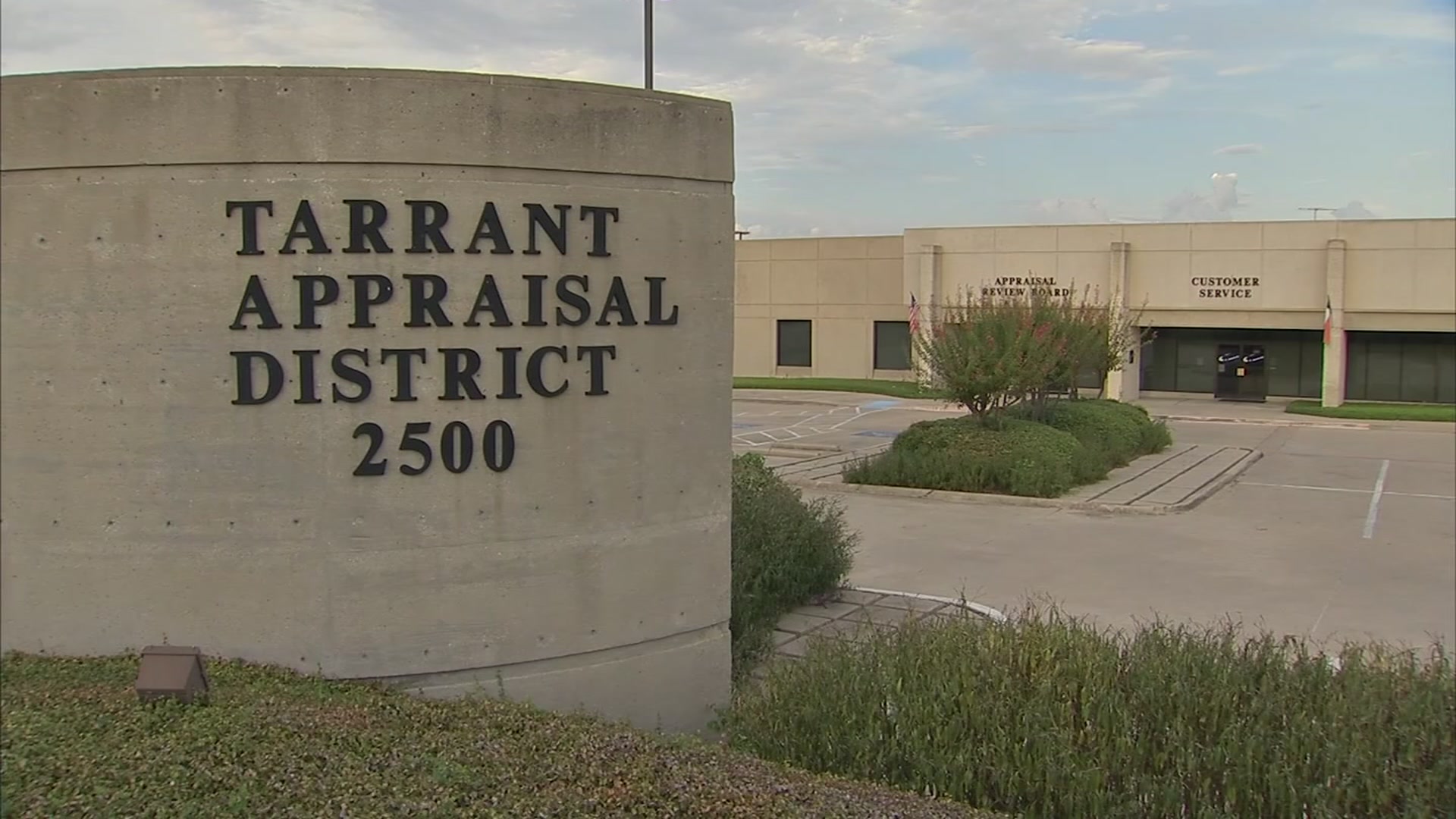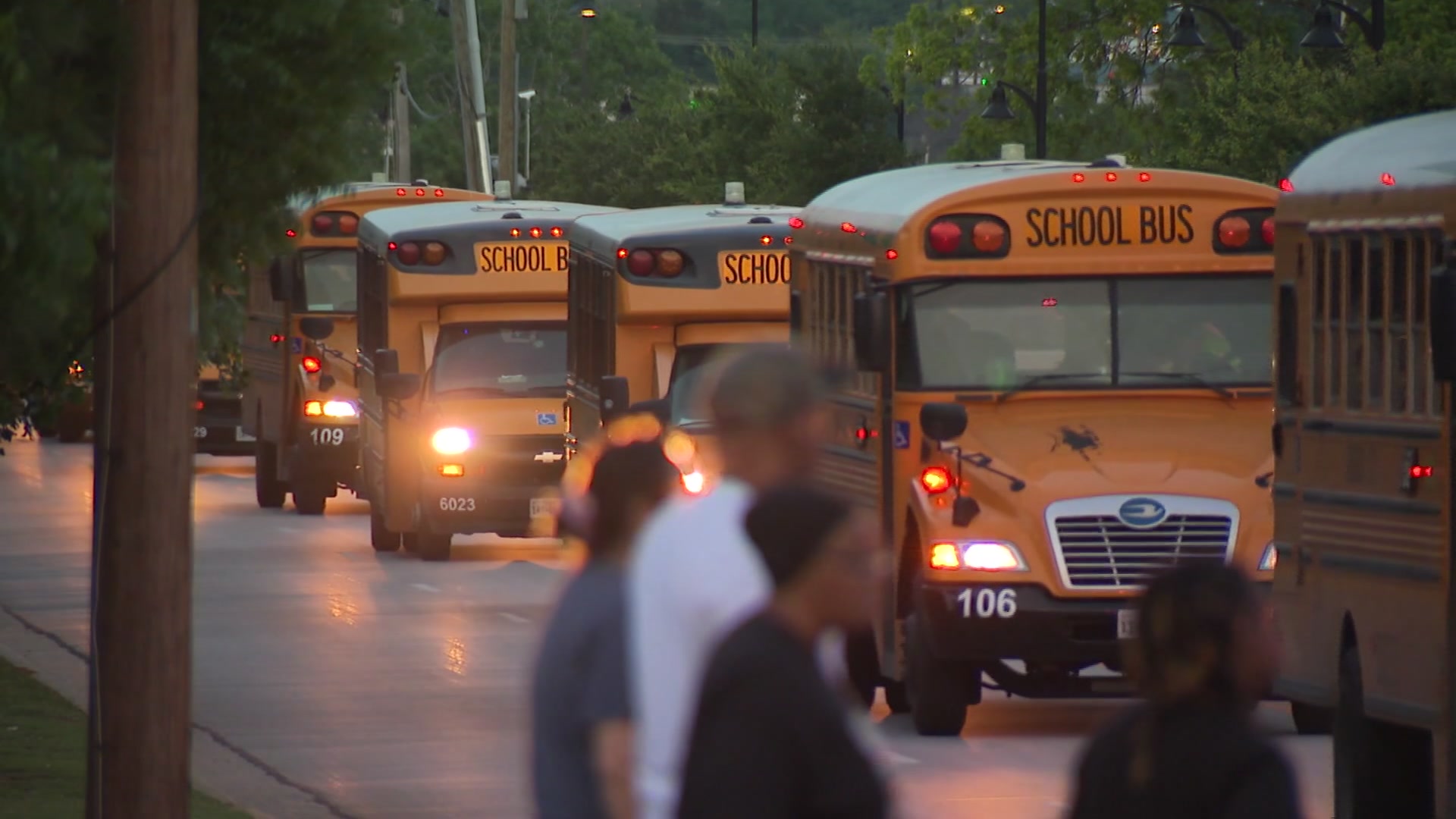Mansfield police say instead of safeguarding his daughter from drugs in his home, 26-year-old Michael Ray Reed responded to the possible overdose by Googling 'how to make a 2-year-old throw up' and sought an opioid-reversal drug on 'Door Dash.'
The tragic death of a North Texas toddler is being linked to the deadly synthetic opioid fentanyl, and her father and aunt are being blamed for not seeking help right away.
The child's mother spoke with NBC 5 about her loss with the hope of sparing others her pain.
At just 2 years old, Nevaeh Reed seemed destined for greatness.
Get DFW local news, weather forecasts and entertainment stories to your inbox. Sign up for NBC DFW newsletters.
"She was so happy, loud," said her mother Stephanie Wallace. "She loved to sing, she loved to dance, she loved to act. I know she was going to be so great."
The sweet child’s endless possibilities were tragically dashed during a February visit to her father’s home in Mansfield. Nevaeh’s parents were no longer together but were successfully co-parenting.
Nevaeh’s death on Feb. 28 is being linked to fentanyl poisoning. Her father, Michael Reed, is charged in the toddler’s death.
Local
The latest news from around North Texas.
According to an arrest warrant, Mansfield police responded to a report of an unconscious child on Feb. 18 at an apartment complex along Towne Crossing Boulevard.
Reed reportedly told police he and his daughter fell asleep on the couch and woke up to his sister alerting him that Naveah was unconscious and struggling to breathe.
Responding officers reportedly noticed the apartment appeared to be dirty and had a strong odor of marijuana.
An officer found several blue and white pills, including a blue pill described as an M30 pill on the floor.
Later tests confirmed it contained fentanyl.
Officers also found other drug paraphernalia, including baggies and a syringe on a coffee table, as well as a loaded gun on a kitchen cabinet, according to the document.
Reed’s male roommate reportedly told police the child wandered into his upstairs room at about 8 p.m. and he noticed she had ‘powder all over her.’
The witness discovered her father was asleep on the couch.
Police said Reed’s sister, Jamie Popovic, who also lives in the apartment, lied about what time she arrived home to find the girl in trouble.
At some point, all three adults realized the girl was suffering from a possible drug overdose and failed to call 911, according to the arrest warrants.
Reed allegedly warned his roommate and his sister to not call the police fearing CPS involvement and that he ‘would lose his kids.’
Instead, police said, they attempted to induce vomiting, they put ice on the child’s face and Reed attempted to have the ‘overdose-reversal drug Naloxne (sic) delivered via a Door Dash’ app.
Police said during their investigation of Google searches and other evidence, approximately two hours passed without 911 being called.
Reed later told police he called 911 when his daughter stopped breathing.
It was too late.
The damage, Mom said, was done.
"She was on a ventilator for 10 days and on the 28th, they pronounced her brain dead and took her off [life support,]" said Wallace.
Wallace said she never suspected there was drug activity going on at Reed’s house, otherwise she would never allow him to take their daughter there.
While toxicology results are not being made public, she said her daughter had a lethal dose of fentanyl in her system.
Reed is charged with failure to seek help and failure to safeguard fentanyl. Popovic is charged with abandoning/endangering a child. Both have since bonded out of jail.
Reed’s court-appointed attorney Shane Lewis did not respond to NBC 5’s request for comment on Monday.
While Wallace is sure Reed loved his daughter, she wants him and Popovic to be sentenced to jail to think about what they’ve done. She is also calling on all parents and adults around children to be aware of the deadly consequences of leaving the lethal drug within reach.
"It hurts because that’s my baby and they’re kids. They’re so innocent. We’re here to protect them. That’s our job," said Wallace. "They didn’t ask to be here. We brought them in. We vowed to protect them and to raise them."
Yale School of Medicine Assistant Professor of Pediatrics Julie Gaither researched the effects of fentanyl and children and found, "Fentanyl was implicated in 5,194 (38%) of the 13,861 fatal pediatric opioid poisonings between 1999 and 2021. In 1999, only around 5% of opioid deaths in children were due to fentanyl, but in 2021, the drug was responsible for 94% of deaths. Pediatric deaths from fentanyl began to rise substantially in 2013, around the same time fentanyl deaths also trended upward for adults. Since 2013, pediatric deaths from fentanyl have risen 3,000%."
Gaither’s findings have been published in JAMA Pediatrics in May 2023.
WHAT IS FENTANYL?
Fentanyl is a synthetic opioid that is 50 times more potent than heroin and 100 times more potent than morphine. Just two milligrams of fentanyl, which is equal to 10-15 grains of table salt, is considered a lethal dose.
Without laboratory testing, there is no way to know how much fentanyl is concentrated in a pill or powder. If you encounter fentanyl in any form, do not handle it and call 911 immediately.
Fentanyl remains the deadliest drug threat facing this country. According to the Centers for Disease Control and Prevention, 107,622 Americans died of drug overdoses in 2021, with 66% of those deaths related to synthetic opioids like fentanyl.
Drug poisonings are the leading killer of Americans between the ages of 18 and 45. Fentanyl available in the United States is primarily supplied by two criminal drug networks, the Sinaloa Cartel and the Jalisco New Generation Cartel (CJNG).
WHAT IS RAINBOW FENTANYL?
In August 2022 the Drug Enforcement Administration issued a public advisory about the alarming emerging trend of colorful fentanyl available nationwide.
Brightly-colored fentanyl, dubbed "rainbow fentanyl" in the media, is being seized in multiple forms, including pills, powder, and blocks that resemble sidewalk chalk.
“Rainbow fentanyl—fentanyl pills and powder that come in a variety of bright colors, shapes, and sizes—is a deliberate effort by drug traffickers to drive addiction amongst kids and young adults,” said DEA Administrator Anne Milgram. “The men and women of the DEA are relentlessly working to stop the trafficking of rainbow fentanyl and defeat the Mexican drug cartels that are responsible for the vast majority of the fentanyl that is being trafficked in the United States.”
Despite claims that certain colors may be more potent than others, there is no indication through DEA’s laboratory testing that this is the case. The DEA said every color, shape, and size of fentanyl should be considered extremely dangerous.
WHAT IS NARCAN?
According to the manufacturer, "Narcan nasal spray is a prescription medicine used for the treatment of a known or suspected opioid overdose emergency with signs of breathing problems and severe sleepiness or not being able to respond."
The active ingredient in Narcan is naloxone hydrochloride. Narcan is the brand name for the device that delivers naloxone into the nasal cavity.
According to the Substance Abuse and Mental Health Services Administration, naloxone is an FDA-approved opioid antagonist medication that is used to reverse an opioid overdose. SAMHSA said naloxone is a temporary treatment and its effects do not last long so it's critical to obtain medical intervention as soon as possible after administering or receiving naloxone.
WHAT IS NALOXONE?
According to the National Institutes of Health's National Institute on Drug Abuse, naloxone is a medicine that can rapidly reverse an opioid overdose by attaching itself to opioid receptors and either reversing or blocking the effects of opioids.
"Naloxone can quickly restore normal breathing to a person if their breathing has slowed or stopped because of an opioid overdose. But, naloxone has no effect on someone who does not have opioids in their system, and it is not a treatment for opioid use disorder. Examples of opioids include heroin, fentanyl, oxycodone (OxyContin), hydrocodone (Vicodin), codeine, and morphine.
Naloxone comes in two FDA-approved forms, injectable and as a nasal spray.
Naloxone works for only 30 to 90 minutes and many opioids remain in the body longer than that. It is possible for a person to still experience the effects of an overdose after a dose of naloxone wears off so it's imperative to call 911 or get the overdosing person medical attention as soon as possible after the dose is administered.
The U.S. Food and Drug Administration on March 29, 2023, approved selling naloxone without a prescription, setting the overdose-reversing drug on course to become the first opioid treatment drug to be sold over the counter.
DOES THE FDA APPROVAL MEAN I CAN BUY IT AT CVS OR WALGREENS?
Yes. Narcan was expected to be available over-the-counter at pharmacies by late summer, the company said.
Other brands of naloxone and injectable forms will not yet be available over the counter, but they could be soon.
The nonprofit Harm Reduction Therapeutics Inc., which has funding from OxyContin maker Purdue Pharma, has an application before the FDA to distribute its version of spray naloxone without a prescription
Once available over the counter, the drug could be available at places without pharmacies, like convenience stores, supermarkets and from online retailers.



